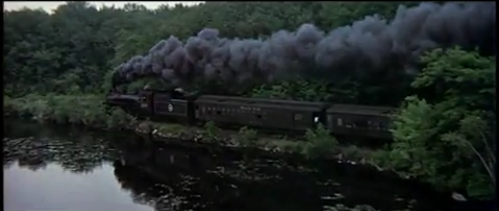
FUNNY GIRL (1968, Wyler)
There are two amazing shots, both using the same technique, in this sequence from William Wyler‘s Funny Girl. But I’m mostly impressed today with the man who actually shot them, Nelson Tyler. Not only did he run the camera but from what I can tell in all my research, he invented the camera mount that allowed for such a smooth and dynamic aerial shot.
Here’s a snippet I found at Resource411:
But it was Nelson Tyler’s invention that finally enabled aerial cinematographers to shoot smooth footage by building a contraption that kept the camera steady. He created a platform on springs that the cameraman sits on inside the helicopter. The body mass and camera weight are floating so when the helicopter shakes, it doesn’t affect the shot.
I think this technology must have been so new and exciting that you just had to cram as many of these shots into your sequence as possible. It’s easy to take this shot for granted, we’ve seen so much aerial photography since this time, including amazingly articulate shots filmed by drones. But for sheer scale, iconic imagery, and deft movement, these shots from Funny Girl still remain one of the pinnacles of the craft. It’s pretty amazing how they were able to sync the singing, time the shot’s movement, stabilize the camera, and keep the helicopter so precisely next to a speeding vehicle (in both shots).
William Wyler’s giant canvas
The first shot, the one of the train, is full of surprise reveals. You get your David-Lean-grade shot of the speeding train, but then something new (for its time) happens, you find your hero in the window. And you get closer and closer… and closer. And she’s singing in sync with the soundtrack. And then we go even closer, as trees zip by between us, emphasizing just how fast the train is speeding – but we’re able to stay right with her in the window. That must have been shocking to experience for the first time — I mean, it still effects audiences to this day.
And then in the final shot. It’s breathtaking how close that camera gets to the tugboat; from super wide, to an actual medium-close-up, and then back to high and wide (thanks in part to a hidden zoom that goes in and then back out). And the timing of the camera move is perfect as — right in step with the music — Barbra Streisand hits her last note and the camera pulls out smoothly and majestically, the visual representation of her note.
The shot plays out the beautifully intimate and exacting beats on an epic scale. It’s the perfect emotional pitch of both what the character is experiencing and, even more importantly, the high you want to jolt the audience with right before the intermission. It must have been especially thrilling to experience in its first release.
You can see the shots here at at 1:09 and 2:25 – but I give you the whole sequence for your enjoyment.


Carlos
Very cool. I never noticed it before. Your right, today they would start out with a model and digitally stitch the shot together, like in lord of hythe rings 3, when gandolf is on the horse running through minas tirith, during one of the big battle sequences. Good job kimo!
R Poe
Lovely, John.
dave C
I have always loved this film and this shot… although i never fully understood why.